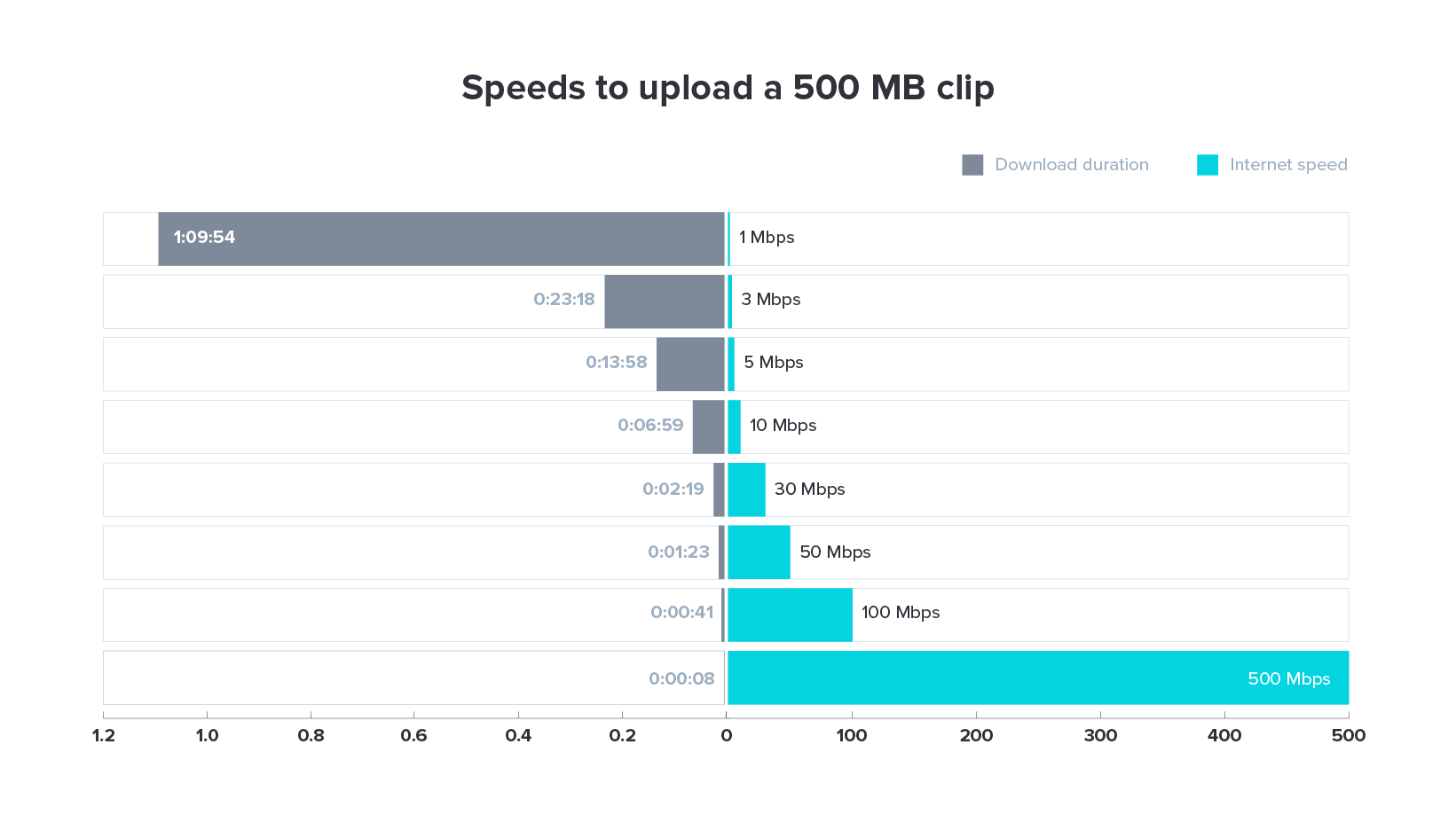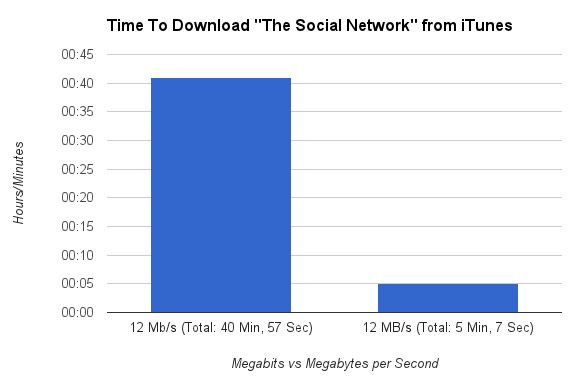Demystifying Megabits Per Second: What Consumers Required to Know
Wiki Article
Just How Megabits Per Second Impact Your Online Tasks
The idea of megabits per second (Mbps) plays a pivotal role in shaping our on-line experiences. As digital activities multiply, recognizing the ramifications of Mbps on gaming, streaming, and video conferencing comes to be increasingly important. Higher Mbps can enhance efficiency and reduce disturbances, while insufficient rates might promote frustration and inadequacy. Evaluating your family's certain requirements in regard to these speeds is necessary, especially as multiple gadgets compete for bandwidth. The subtleties of just how Mbps affects various online activities require further exploration, specifically as our dependence on electronic connection continues to evolve.Comprehending Megabits Per Second
When taking into consideration web rate, it's vital to comprehend the principle of megabits per second (Mbps), which works as a conventional dimension for information transfer rates. This metric evaluates just how much data can be transmitted over a net link in one second, providing a clear understanding of efficiency capacities - Megabits Per Second. For context, one megabit amounts to one million little bits, and Mbps is frequently made use of to express data transfer for different on the internet tasksA higher Mbps suggests a much faster internet connection, making it possible for customers to perform jobs such as downloading and install data, searching internet sites, and taking part in on the internet gaming a lot more effectively. As an example, normal browsing requires around 1-5 Mbps, while streaming high-definition video might require 5-25 Mbps. Understanding these needs is vital for establishing the ideal web speed needed for specific tasks.
Furthermore, the variety of gadgets connected to a network can affect total efficiency. Several users streaming, pc gaming, or downloading simultaneously can stress available data transfer, causing slower rates - Megabits Per Second. Evaluating individual online behaviors and demands is essential in selecting a web plan that lines up with one's needs, ensuring a smooth electronic experience
Streaming and Buffering Issues
Streaming high-def web content has ended up being a staple of contemporary on the internet entertainment, yet it is typically accompanied by annoying buffering issues. These disruptions can substantially detract from the viewing experience, bring about frustration and prospective loss of target market engagement. Buffering occurs when the data sent from the streaming solution is not obtained quickly sufficient to preserve a smooth playback, frequently due to not enough web speed gauged in megabits per second (Mbps)
Furthermore, real-time streaming can be affected by network congestion, which occurs when several tools share the same bandwidth. Optimizing link speed and guaranteeing sufficient Mbps is important for a seamless streaming experience. As streaming solutions proceed to develop, understanding the influence of Mbps on buffering problems stays critical for consumers seeking undisturbed amusement.
Online Pc Gaming Efficiency
The effect of web speed on on-line activities prolongs beyond streaming, significantly affecting on the internet video gaming performance. In competitive gaming, reduced latency and high bandwidth are crucial for a smooth experience. A rapid connection decreases lag, permitting players to react promptly to in-game occasions, which can be the distinction between victory and loss.Bandwidth, measured in megabits per second (Mbps), plays an important role in supporting numerous devices and gaming platforms all at once. Insufficient bandwidth can bring about went down links or reduced video game high quality, adversely influencing gameplay. As an example, on-line multiplayer games require considerable data transfer, particularly throughout peak video gaming hours when numerous gamers are online.
Fast-paced first-person shooters require greater speeds to maintain responsiveness, while turn-based approach video games may function moderately well on lower speeds. As online gaming proceeds to progress, with boosting graphical integrity and even more complex multiplayer environments, the need for higher Mbps will only intensify.
Video Clip Conferencing High Quality
In today's digital landscape, video conferencing top quality is heavily influenced by net speed, particularly in regards to data transfer and latency. Premium video calls call for sufficient bandwidth to transfer audio and video clip data flawlessly. Normally, a minimum of 1.5 Mbps upload and download speeds is advised for conventional definition video clip, while great post to read high-definition video clip conferencing typically requires at the very least 3 Mbps.Latency, or the hold-up between sending out and receiving information, also plays a crucial duty in the user experience. Reduced latency guarantees that discussions flow normally without awkward stops or disruptions. Ideally, latency must be below 150 nanoseconds for effective communication. Greater latency can cause echo, lag, and disjointed communications, which can impede partnership and engagement throughout meetings.
Moreover, several individuals in a video clip conference can strain offered bandwidth, necessitating even greater rates. Network congestion, usually brought on by synchronised activities like streaming or downloading, can better break down video high quality. Thus, for organizations relying upon video clip conferencing for remote partnership, comprehending the partnership in between megabits per total and second interaction top quality is important for preserving efficiency and improving online communications.
Selecting the Right Web Plan
Picking an ideal net strategy is critical for ensuring optimal efficiency in numerous online activities, particularly in settings that demand high transmission capacity, such as video clip conferencing and online pc gaming. Megabits Per Second. When thinking about a web plan, it is important to evaluate both the rate and information allowance to match your particular usage demandsFor homes with several users involving in synchronised activities, a strategy supplying higher megabits per second (Mbps) is suggested. Usually, a minimum of 25 Mbps appropriates for standard streaming and browsing, while strategies exceeding 100 Mbps are more effective for more extensive jobs. Furthermore, consider the nature of your online tasks; video conferencing calls for at the very least 1.5 Mbps post rate, while on the internet gaming might need a reduced latency however regular connection.
Unrestricted data strategies can avoid strangling and disturbances, specifically if hefty use is anticipated. By attentively selecting a web plan customized to your needs, you can improve your on-line experience, guaranteeing smooth, undisturbed accessibility to your recommended tasks.
Final Thought
Finally, the significance of megabits per second (Mbps) fit on-line tasks can not be overemphasized. Higher Mbps helps with seamless streaming, decreases buffering, improves pc gaming experiences, and guarantees premium video clip conferencing. On the other hand, inadequate data transfer can result in aggravating disruptions and reduced efficiency across various tasks. A detailed understanding of individual or home Mbps demands is vital for selecting an ideal net plan that appropriately sustains diverse online activities and customer demands.

Typically, a minimum of 25 Mbps is ideal for typical streaming and surfing, while plans surpassing 100 Mbps are more suitable for more extensive jobs. Furthermore, think more info here about the nature of your online activities; video clip conferencing needs at least 1.5 Mbps upload rate, while on the internet video gaming might require a lower latency but regular connection.
Report this wiki page